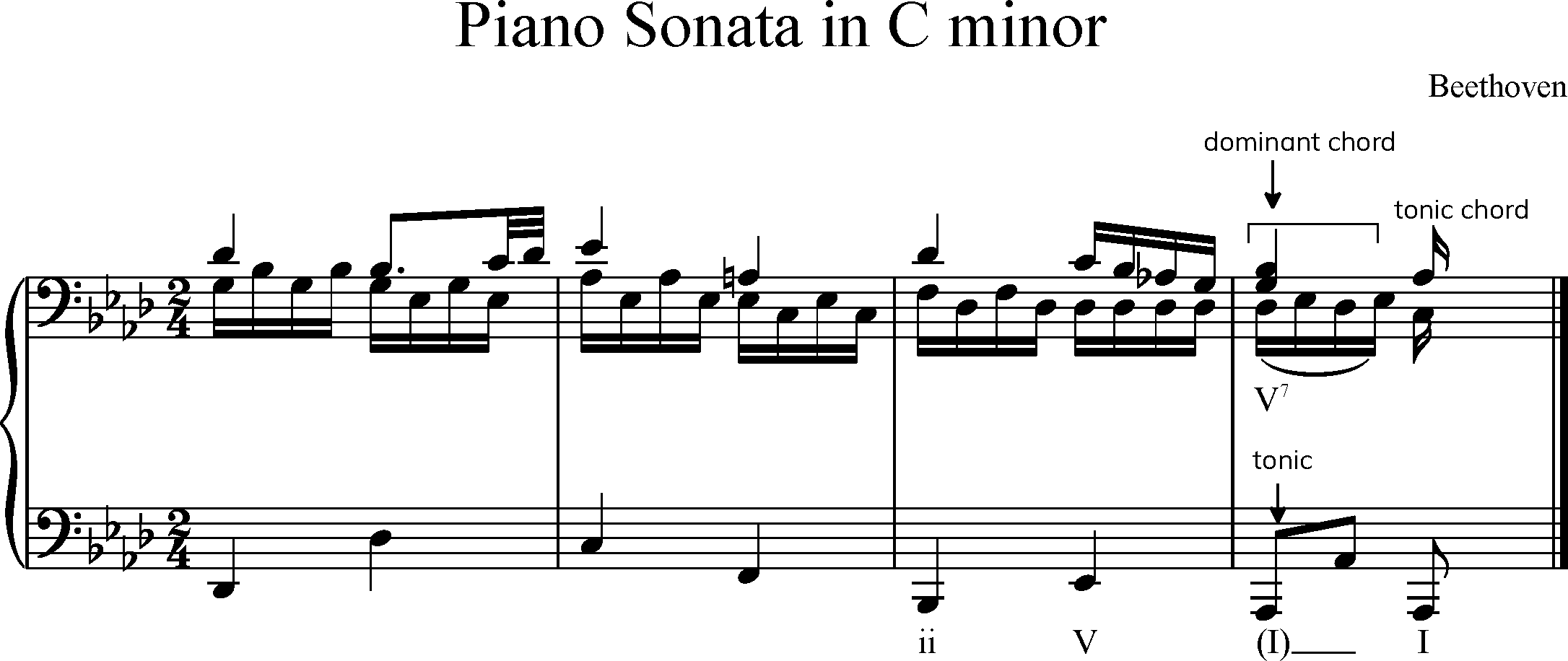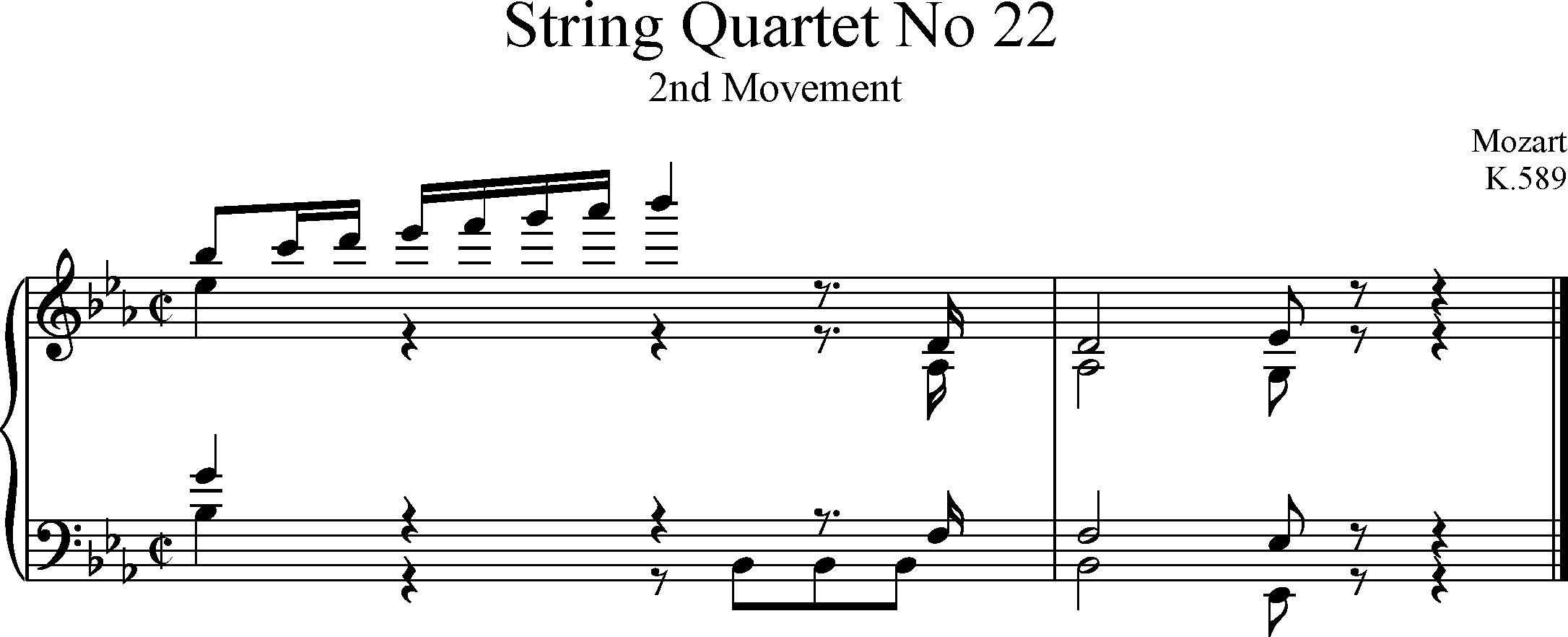The next quotation uses two kinds of suspension. Can you find them?
Fig. 12

The second suspension is a triple suspension because the F# in the top part is a 9-8 suspension against the root of the chord (E), at the same time as the second voice strikes a D# against the root (7-8) and the tenor sings a 4-3 suspension.
Suspensions such as this one are frequently found in music from the Classical period when it is known as a feminine cadence. The final chord falls on a weak beat. You also often see the bass part playing the tonic root while other parts create tension by striking a dissonant chord initially but which resolves on the weak beat. Listen to the second movement of Beethoven’s C minor Sonata for PianoI. The end of the first phrase is seen in the quotation below.
Fig. 13

Another example of feminine cadence:
Fig. 14

Another example of feminine cadence:
Fig. 15

Another example of feminine cadence:
Fig. 16
